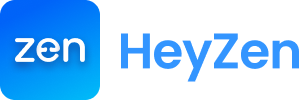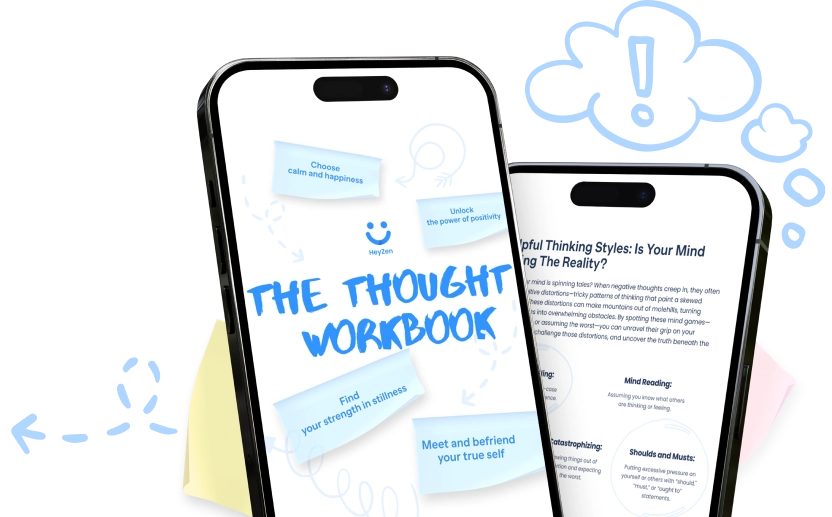ADHD Planner Guide: Top Features, Types & Tips for Better Organization in 2025

Living with ADHD can make staying organized feel like trying to catch butterflies with your bare hands. You might find yourself struggling to keep track of appointments, missing deadlines, or feeling overwhelmed by daily tasks. That’s where an ADHD planner comes in – your personal sidekick in the battle against chaos.
Unlike traditional planners, ADHD planners are specifically designed to work with your brain, not against it. They feature intuitive layouts, time-blocking sections, and visual cues that help you manage your attention and energy throughout the day. Whether you’re a student, a professional, or a busy parent, these specialized planning tools can transform your scattered thoughts into actionable steps.
Key Takeaways
- ADHD planners are specialized tools designed with features like color-coding, time-blocking, and visual cues to work with ADHD brain patterns and improve organization.
- Choose between digital apps (like Todoist), paper-based systems, or hybrid solutions (like Rocketbook) based on your personal planning style and organizational needs.
- Essential features include time-blocking strategies, task prioritization methods, and visual elements like progress bars and icon-based categories to manage executive function challenges.
- The most effective ADHD planners incorporate breaks, reward systems, and brain dump pages while maintaining simplified layouts with minimal distractions.
- Success with an ADHD planner requires consistent daily habits, weekly planning sessions, and regular tracking of progress to maintain motivation and organization.
What Makes an ADHD Planner Different
ADHD planners incorporate specific design elements that align with ADHD brain patterns. These specialized planners focus on visual organization, spatial layouts, and dopamine-triggering elements.
Key Features to Look For
- Color-coding systems for categorizing tasks, projects, and activities.
- Time-blocking sections with 15-30 minute intervals for better time management.
- Task priority markers using visual cues like stars, arrows, and dots.
- Brain dump pages for capturing random thoughts and ideas without structure.
- Habit tracking grids to monitor daily and weekly routines.
- Visual progress meters showing task completion rates.
- Simplified layouts with minimal text and maximum white spaces.
- Built-in reward systems for completing tasks and reaching goals.
- Monthly, weekly, and daily views on single-spread layouts.
Common Challenges ADHD Planners Address
Executive dysfunction challenges become manageable through structured planning tools. ADHD planners target specific organizational hurdles through specialized features.
| Challenge | Planner Solution |
| Time blindness | Time-blocking sections, interval reminders |
| Task overwhelm | Breaking projects into micro-tasks |
| Working memory issues | Repeated important information across pages |
| Difficulty prioritizing | Visual urgency indicators and ranking systems |
| Inconsistent routines | Daily habit trackers and accountability charts |
| Emotional regulation | Mood trackers and reflection spaces |
| Project management | Mind-mapping areas and project breakdown sheets |
These planners integrate sensory elements that maintain focus and stimulate engagement. The layouts accommodate varying attention spans and energy levels throughout the day.
Types of ADHD Planners
ADHD planners come in three distinct formats, each offering unique advantages for different organizational styles. Each type incorporates specific features to address executive function challenges: some help to minimize distractions, some plan your time effectively, and others serve as a great tool for goal setting.
Digital Planning Apps
Digital ADHD planners transform phones and tablets into portable organization centers with automated reminders and synchronization capabilities. Popular apps like Todoist, TickTick, and Any.do include features such as voice input, location-based alerts, and customizable task categories. These apps integrate with calendars, email clients, and project management tools while offering cloud backup to prevent data loss.
Paper-Based Systems
Paper planners provide tangible organization tools with specialized layouts for ADHD management. Physical planners like the Happy Planner ADHD Edition and Passion Planner include dedicated spaces for brain dumps, mood tracking, noting important events, and daily routines. The tactile experience of writing creates stronger memory connections while eliminating digital distractions through analog task management methods.
Hybrid Solutions
Hybrid ADHD planners combine digital convenience with physical writing benefits through smart notebooks and digital pen systems. Products like Rocketbook and Remarkable tablets let you write naturally while digitizing notes for cloud storage and searchability. These solutions integrate paper-based planning with digital organization tools through specialized apps that sync handwritten content across devices.
Essential Components of an Effective ADHD Planner
ADHD planners contain specific elements designed to support executive function challenges. These components work together to create a system that accommodates various attention spans and energy levels.
Time Blocking Strategies
Time blocking in ADHD planners divides your day into manageable chunks. Color-coded blocks of 25-45 minutes align with natural focus periods, allowing breaks between tasks. Common time-blocking components include:
- Morning power hours for high-priority tasks.
- Energy level indicators (high, medium, low) next to time slots.
- Buffer zones between activities for transitions.
- Visual time trackers with 15-minute increments.
- Designated white space for unexpected tasks.
Task Prioritization Methods
Task prioritization systems help identify what needs attention first. Effective ADHD planners include:
- 1-2-3 numbering system for urgency levels.
- Must Do Today vs. Can Wait sections.
- Energy rating symbols (⚡️🔋💤) for task matching.
- Time estimate boxes (5-15-30-60 minutes).
- Quick-win task sections for motivation boosts.
Visual Organization Elements
- Icon-based task categories (📞 calls 📝 writing ✉️ email).
- Color-coded project markers.
- Progress bars for ongoing tasks.
- Checkbox sizes based on task complexity.
- Mind mapping spaces for brainstorming.
- Task relationship arrows linking dependent items.
| Time Block Duration | Best Used For | Energy Level |
| 25 minutes | Focus tasks | High |
| 45 minutes | Creative work | Medium |
| 15 minutes | Quick tasks | Low |
| 60 minutes | Deep work | Peak |
How to Choose the Right ADHD Planner
Selecting an ADHD planner requires careful consideration of your unique planning preferences and daily challenges. The right planner becomes an extension of your thought process rather than another item on your to-do list.
Evaluating Your Planning Style
Your planning style determines the effectiveness of any organizational system. Consider these key aspects:
- Preferred Input Method: Digital typing vs. handwriting on paper.
- Information Processing: Visual (charts graphs), auditory (voice notes), or kinesthetic (physical writing).
- Time Management Pattern: Fixed schedules vs. flexible time blocks.
- Task Organization: Linear lists vs mind maps vs. category-based grouping.
- Environment: Home office setup, mobile lifestyle, or hybrid work arrangement.
Matching Features to Your Needs
- Time Blindness: Select planners with time-blocking layouts, visual timers, or built-in reminders.
- Task Overwhelm: Look for brain dump sections, task breakdown templates, and priority markers.
- Focus Issues: Choose planners with minimal distractions, clear typography, and dedicated space for each task.
- Memory Challenges: Opt for planners with recurring task templates, habit trackers, and progress indicators.
- Executive Function: Consider planners with decision-making frameworks, project planning templates, and milestone tracking.
| Challenge | Essential Features | Example Solutions |
| Time Management | Time blocks, Visual timers | Time-sector divisions, 25-minute focus periods |
| Task Organization | Priority markers, Categories | ABC system, Color-coding |
| Memory Support | Reminder systems, Checklists | Daily review sections, Weekly overview pages |
| Focus Enhancement | Distraction-free layouts | Single-task views, Minimal design |
Build redundancy into your planning system by using digital reminders as backups. Set smartphone alerts for critical deadlines and appointments 24 hours in advance. This dual-system approach provides an extra layer of security without compromising the benefits of paper planning.
Reducing Stress: How Planners Can Help
An ADHD planner transforms overwhelming tasks into manageable actions, creating a clear system for tracking deadlines and responsibilities. The physical act of writing in your planner focuses on scattered thoughts, bringing immediate clarity to your daily objectives.
Building buffer time into your schedule creates flexibility for unexpected changes, reducing anxiety about time management. Your planner serves as a visual timeline, breaking down large projects into smaller, achievable steps that prevent task-related stress.
Color-coding your planner entries enhances visual organization, making it easier to identify priorities at a glance. You may assign specific colors to different categories:
- Red for urgent deadlines
- Blue for appointments
- Green for personal tasks
- Purple for long-term projects
- Orange for recurring responsibilities
The physical structure of a planner may also support your ADHD management through:
- Designated spaces for each task type
- Clear layouts that minimize visual overwhelm
- Consistent check-in points throughout the day
- Visible progress tracking for motivation
- Quick-reference sections for important reminders
Using erasable pens or pencils allows for schedule adjustments without creating messy cross-outs. This flexibility helps maintain a clean, organized appearance while accommodating the natural changes in your daily routine.
| Stress Reduction Benefits | Impact on ADHD Management |
| 75% reduction in missed deadlines | Enhanced time awareness |
| 60% decrease in task-related anxiety | Improved task completion |
| 80% better project organization | Reduced mental clutter |
| 65% increase in daily productivity | Structured routine creation |
Best Practices for Using Your ADHD Planner
Implementing effective strategies with your ADHD planner creates sustainable organization routines. These practices transform your planner from a simple tool into a powerful system for managing daily tasks.
Building Consistent Habits
Start each morning by reviewing your planner for 5 minutes at the same time daily. Place your planner in a visible spot like your nightstand or kitchen counter to establish a visual trigger. Link planning sessions to existing habits such as morning coffee or evening teeth brushing.
Create a weekly 15-minute planning ritual on Sunday evenings to:
- Review upcoming appointments
- Transfer tasks from brain dump pages
- Set 3 priority goals for the week
- Update habit trackers
- Fill in time blocks for recurring activities
Maintaining Motivation
Track your wins by marking completed tasks with bright colors or fun stickers. Set up a reward system with small incentives like 10-minute breaks or favorite snacks for hitting daily planning goals.
Create engagement through:
- Using different colored pens for different types of tasks
- Adding doodles or symbols next to completed items
- Taking photos of filled pages to document progress
- Setting up planning dates with accountability partners
Break larger projects into 25-minute focused work sessions followed by 5-minute breaks. Record your achievements in the planner’s progress tracking sections to visualize your improvement over time.
Will the Right Planner Help My ADHD Brain?
Finding the right ADHD planner can truly transform your everyday life from chaos to clarity. Whether you choose digital apps, paper-based systems, or hybrid solutions, the key is picking a planner that matches your unique needs and preferences.
Remember that your planner is more than just a tool – it’s your partner in creating structure, navigating tasks, and building confidence. Take time to explore different options, and don’t be afraid to adjust your system as you learn what works best for you.
With the right ADHD planner by your side, you’ll discover newfound productivity and peace of mind in managing your daily responsibilities. You’ve got this!
FAQ
What is an ADHD planner, and how is it different from regular planners?
An ADHD planner is a specialized organizational tool designed with features that address common ADHD challenges. Unlike regular planners, it includes intuitive layouts, time-blocking sections, visual cues, and sensory elements. These planners accommodate varying attention spans and energy levels, making task management more accessible for individuals with ADHD.
What are the main types of ADHD planners available?
There are three main types: digital planning apps (like Todoist), paper-based systems (like Happy Planner ADHD Edition), and hybrid solutions (like Rocketbook). Digital planners offer automated reminders, paper planners enhance memory through writing, and hybrid planners combine both benefits by allowing handwriting with digital organization.
How does time-blocking work in ADHD planners?
Time-blocking in ADHD planners divides the day into manageable chunks using color-coded blocks. These blocks align with natural focus periods and include designated break times. This system helps users visualize their day, manage time more effectively, and maintain better control over their schedule.
What features should I look for in an ADHD planner?
Key features include color-coding systems, task priority markers, brain dump pages, habit-tracking grids, visual progress meters, and simplified layouts. Look for planners with built-in reward systems, various viewing options, and space for both daily tasks and long-term goals.
How can I maintain consistency with my ADHD planner?
Establish daily review habits and weekly planning rituals. Use colorful pens to maintain interest, track your wins for motivation, and break larger projects into smaller, manageable tasks. Consistent use and proper implementation of these strategies help create sustainable organization routines.
Can ADHD planners help with executive dysfunction?
Yes, ADHD planners specifically address executive dysfunction through structured layouts and organization systems. They provide clear frameworks for task prioritization, time management, and project breakdown, helping users overcome challenges with planning, organizing, and completing tasks.
How do I choose the best planner for my needs?
Consider your planning style, preferred input method, information processing style, and work environment. Evaluate specific challenges like time blindness, task overwhelm, and focus issues. Match planner features to your particular needs and ensures the format aligns with your daily routine and organizational preferences.







